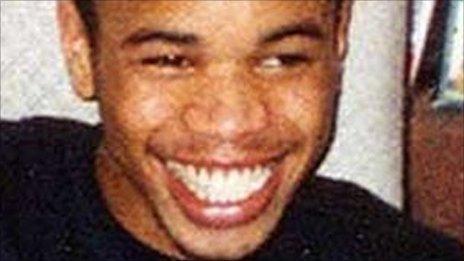Lozells riots: The night Birmingham was rocked by rioting
- Published

The Lozells community was rocked by the violence in which a young man died
Ten years ago rumours of the rape of an Afro-Caribbean teenager by a group of Asian men surfaced in a radio broadcast, bringing to a head weeks of racial tension in the Lozells area of Birmingham. Those caught up in the ensuing rioting recall what happened when the two communities at the centre of the allegations clashed.
The rumour had been swirling around Birmingham for weeks - a girl had allegedly been gang-raped by a group of men of Pakistani origin in a beauty parlour on Wellington Road.
When the story was broadcast - and presented as fact - on two pirate radio stations, it was the spark needed to ignite simmering racial tensions. The evening of 22 October 2005 saw petrol-bombs thrown, windows smashed, and an innocent bystander stabbed through the heart and killed.
But why did the inflammatory whisper cause such chaos?
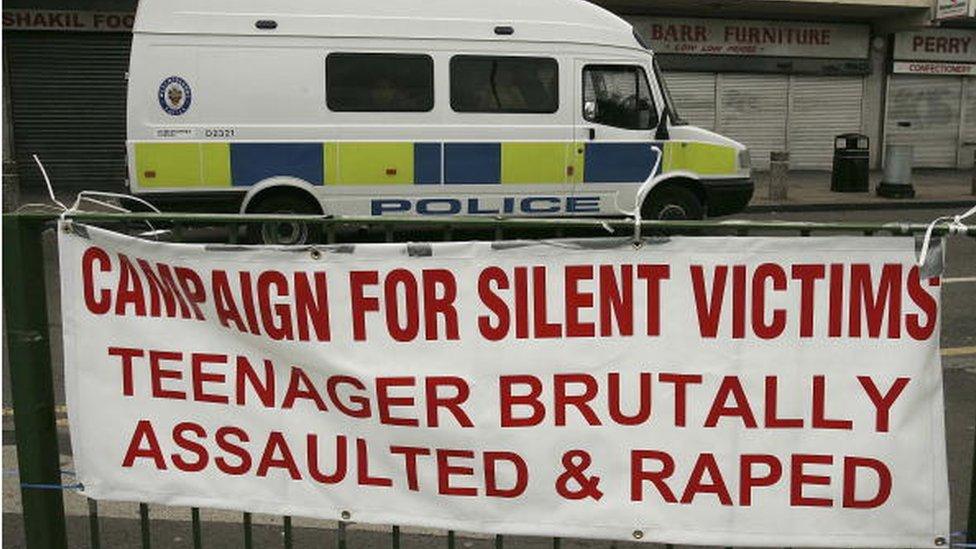
The disturbances were linked to the alleged sexual assault of a young girl
At midday on 22 October, more than 500 people gathered as part of a peaceful protest at the shop where the girl was believed to have been attacked.
She was said to have been unable to tell the police of her ordeal because she and her family were illegal immigrants and the rally was therefore held in aid of "Justice for Silent Victims".
At 17:00, campaigners moved to the New Testament Church of God, in George Street, where police had been addressing the congregation as part of their investigation.
But calm quickly turned to violence when officers were confronted by a gang trying to force their way into the church.
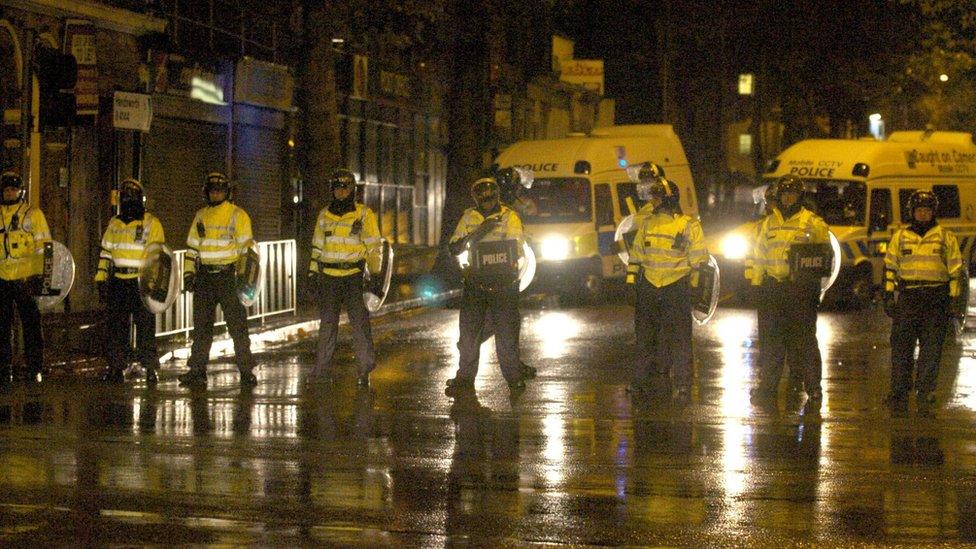
Police took to the streets of Lozells in an attempt to combat violent outbreaks
Shale Ahmed, then a 24-year-old youth worker, saw the tension unfold.
"I can just remember everything kicked off and people were marching," he said. "Everyone just came down Lozells Road. It just tumbled and one thing led to another.
"People were saying the mosques were going to be attacked so the idea spreading was we have to go and stand guard at the mosque. I just remember people running and screaming to the side roads.
"There were so many people - police could not control them."
Bishop Derek Webley was working at the New Testament church on the night in question. He said the disturbance stemmed from a desire to see justice done.
"One section of the community felt it had been wronged by another section, which created an explosion which the police and community leaders had to handle," he said.
"The atmosphere was very tense. You could feel that heaviness."
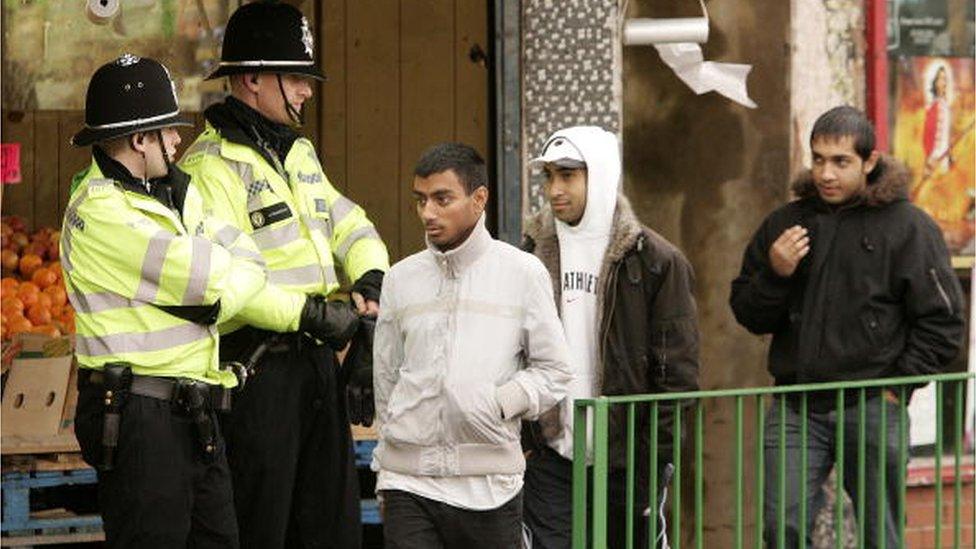
Police stayed in the Lozells area for a few days after the riots
At 19:00, what police described as "a series of sporadic, serious, extreme incidents" occurred in the area of Carlyle Road.
Riot police were called to the area after youths carrying baseball bats and other weapons smashed windows and vehicles, including an ambulance.
Isaiah Young-Sam, a council IT worker, was on his way home from the cinema having chosen to walk along the back streets of Lozells where he and his friends thought they would avoid the trouble.
But, despite taking precautions, the 23-year-old was surrounded by a mob and stabbed. At 19:25 he was pronounced dead on arrival at hospital.

Police investigate the area near burnt-out vehicles in Lozells. Petrol bombs had been thrown in the previous two nights' disturbances
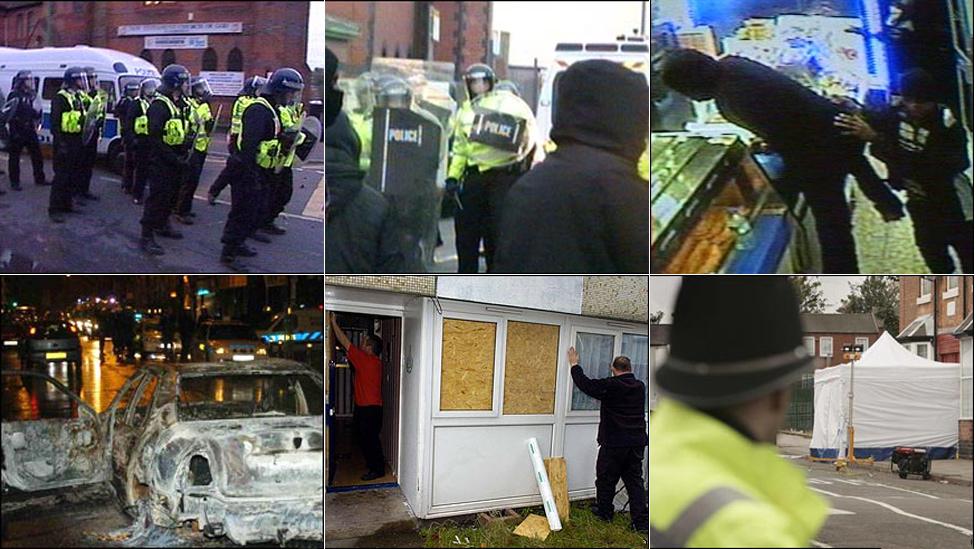
Violence broke out in the Lozells area of Birmingham on 22 October 2005
Elsewhere, shops and takeaways were looted by youths in hooded tops, who dived over counters and raided tills while the owners looked on, unable to stop them.
BBC reporter Phil Mackie was working that night.
"It was frightening," he said. "My car was attacked by a group armed with sticks and baseball bats. The car was dented, but I was physically unharmed.
"A colleague had a similar experience and another friend was stabbed in the head. Luckily her wounds were largely superficial."

The riots were attributed to racial clashes between black and Asian groups
Earlier on Saturday, India Murray, landlady of the Union Inn in Berners Street, just off Lozells Road, had all her windows smashed by people running by and hurling bricks.
She said the tension had been "building for a few days" and the trouble had "kicked off" at about 18:00.
"The police are at the top of the road in their riot wagons and helicopters are everywhere," she told the BBC at the time.

Windows were smashed and cars hit with rocks
A number of petrol bombs were thrown during the riots and at least 35 people were taken to hospital, including a policeman who was shot in the leg.
At about 23:00 witnesses reported hearing 20 to 30 shots fired as riot police continued to tackle gangs.
Mr Ahmed said: "I heard gunshots. I came out after I heard them but not too quickly - I did not want to be a hero.
"I had my youth worker hat on and I had to work in this community and I did not want anything to happen."
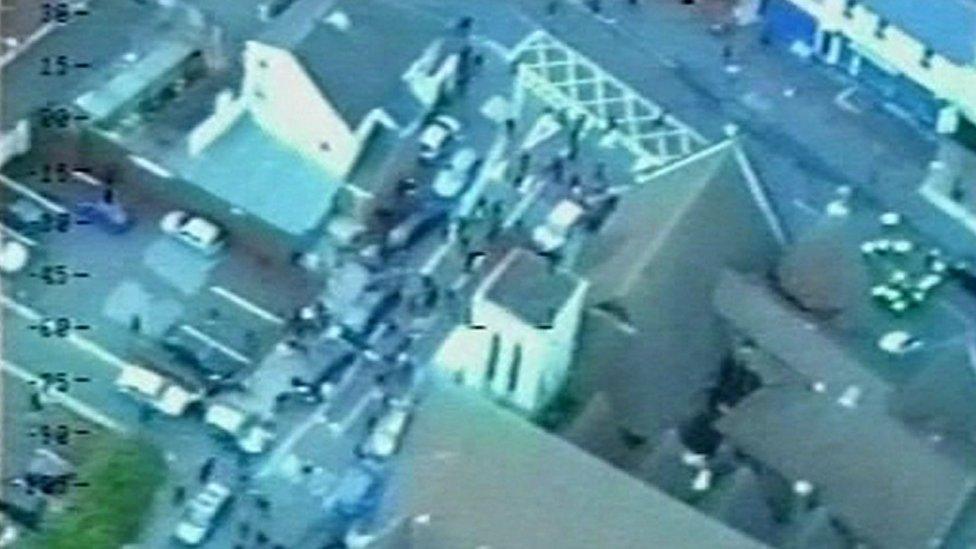
Police helicopters swarmed the area as violence broke out
On Sunday at 01:00 a tentative calm was restored.
Speaking later that morning, newsagent Om Parkash said he opened his Lozells Road shop as normal.
On his way to work he said he noticed a few signs of the violence which took place.

Isaiah Young-Sam was stabbed to death in the 2005 Lozells riots. His killer has never been found
"There was not much difference, but I saw a car which had been burnt and I saw some blood on the pavement."
Three men jailed for the murder of Mr Young-Sam had their convictions quashed after evidence was found to be wrongly used. No-one has been charged over his death since then.
Meanwhile, the allegation of rape that sparked the night of violence is still a mystery. Police have found no evidence to establish whether the girl existed.
Real or not, the allegation was enough to crystallise the animosity between two communities, resulting in violence which is remembered a decade on.
- Published19 April 2011
